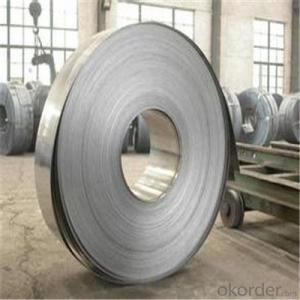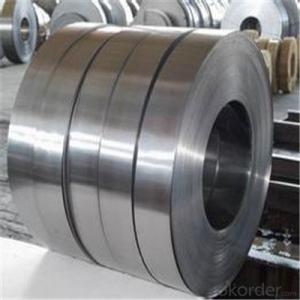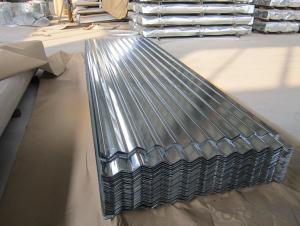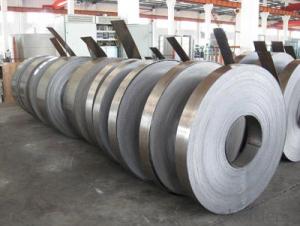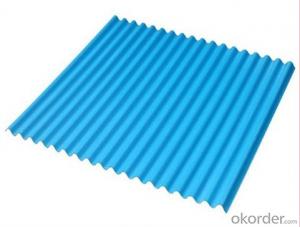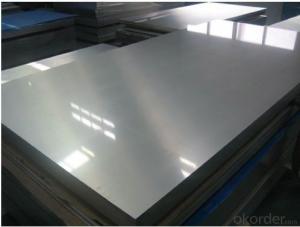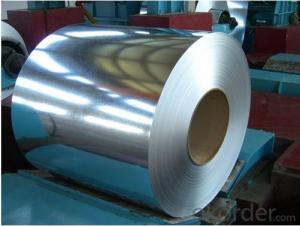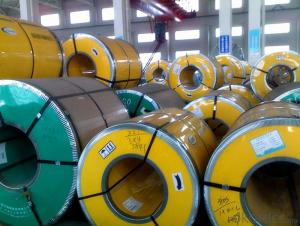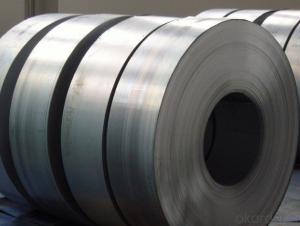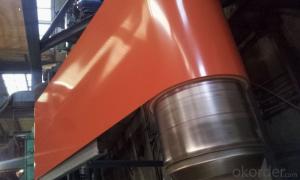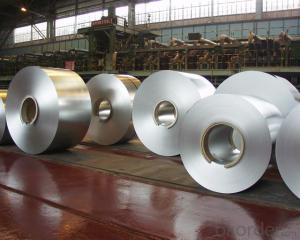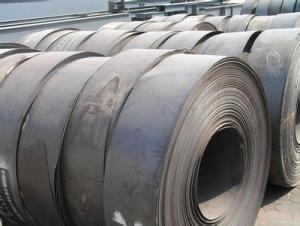Hot Rolled Steel Strip Coils Q195 Q235 Professional Manufacturer in China
- Loading Port:
- Shanghai
- Payment Terms:
- TT OR LC
- Min Order Qty:
- 66 m.t.
- Supply Capability:
- 4433222 m.t./month
OKorder Service Pledge
OKorder Financial Service
You Might Also Like
Item specifice
Applications of Steel Strip Coils:
1:Chemical industry equipment, Industrial tanks
2:Medical Instruments,Tableware, Kitchen utensil,kitchen ware
3:Architectural purpose, Milk & Food processing facilities
4:Hospital Equipment, interior Exterior decoration for building
5:Architectural purposes, escalators, kitchen ware,vehicles
Festures of Steel Strip Coils:
1. Each coil is closely covered by oil paper or plastic film.
2. Outside it is firmly packed with sack cloth or compound paper.
3. Steel strap or PP strap to pack the outside to ensure safety.
Specifications of Steel Strip Coils:
| Description | Hot Rolled Steel Strip |
| Brand | Tianjin Metallurgical No.Steel Group |
| Specification | 1.2-6.0mm*70mm |
| Standard | AISI,ASTM,BS,DIN,GB,JIS |
| Material | Q195,Q215,Q215B,Q235,Q235B |
| Application | Widly used in welding steel pipes, and bicycle making etc. |
| Certificates | BV,SGS,ISO etc. |
| MOQ | 20 tons or according to customers’ requirement. |
| Port of Delivery | Tianjin Port of China |
| Remarks | We can provide qualify goods,competitive price and speedy delivery |
Images of Steel Strip Coils:
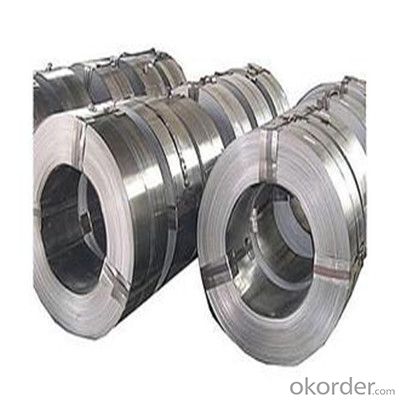
FAQ
1.What's your MOQ?
25MT, it is for one container.
2.Do you have QC teams?
Yeah, sure, our QC team is very important, they will keep the quality control for our products.
3. What's your normal delivery time?
Our delivery time about 10-20days for standard sizes, if you have other requirements like hardness and width ,it is about 20-40days.
- Q:How do steel strips perform in terms of sound insulation?
- Steel strips do not provide significant sound insulation as they are not designed to absorb or block sound waves efficiently. Their primary function is to provide structural support and strength rather than soundproofing capabilities.
- Q:Are steel strips suitable for making architectural façades?
- Yes, steel strips are suitable for making architectural façades. Steel strips offer durability, strength, and versatility, making them an excellent choice for constructing façades. They can be easily shaped, cut, and manipulated to create various architectural designs and patterns. Additionally, steel strips are resistant to weathering, corrosion, and fire, ensuring long-lasting and low-maintenance façades.
- Q:What are the future trends in steel strip manufacturing?
- Steel strip manufacturing has experienced significant advancements and improvements over the years and is expected to continue evolving in the future. The future of steel strip manufacturing will be influenced by several key trends: 1. Revolutionary technologies: The integration of artificial intelligence (AI), machine learning, and automation will revolutionize steel strip manufacturing. These technologies will enhance manufacturing processes, increasing efficiency, accuracy, and productivity while reducing costs and improving quality. 2. Environmental sustainability: As global concerns about the environment grow, the steel strip manufacturing industry will prioritize eco-friendly practices. This includes reducing energy consumption, minimizing waste generation, and exploring alternative energy sources. Utilizing recycled materials and developing greener production techniques will be crucial for meeting the demand for sustainable steel strip manufacturing. 3. Customization and flexibility: In response to the increasing demand for personalized products, steel strip manufacturers will invest in technologies that enable customization and flexibility. Advanced manufacturing techniques like additive manufacturing and 3D printing will allow for the production of complex and customized steel strip components to meet specific customer requirements. 4. Miniaturization and lightweight materials: As technology advances, there is a rising need for smaller and lighter components. Steel strip manufacturers will focus on producing thinner strips and lightweight materials to meet the demands of industries such as electronics, automotive, and aerospace. These advancements will result in more efficient and sustainable products that offer increased performance and reduced fuel consumption. 5. Integration of the supply chain and digitalization: The future of steel strip manufacturing will be characterized by an integrated supply chain and increased digitalization. Manufacturers will adopt technologies like the Internet of Things (IoT), big data analytics, and cloud computing to monitor and optimize the entire production process. This will lead to improved efficiency, reduced downtime, enhanced quality control, and faster response times. 6. Continuous improvement and quality control: To remain competitive in a rapidly evolving market, steel strip manufacturers will need to focus on continuous improvement and quality control. Implementing advanced quality control systems, such as real-time monitoring and predictive maintenance, will help identify and rectify any defects or issues in the manufacturing process, ensuring consistent and high-quality products. In conclusion, the future of steel strip manufacturing will be shaped by advanced technologies, sustainability practices, customization, miniaturization, digitalization, and a focus on continuous improvement. By embracing these trends, steel strip manufacturers can stay ahead of the curve and meet the evolving needs of various industries.
- Q:How do steel strips perform in high-temperature applications?
- Steel strips generally perform well in high-temperature applications due to their inherent properties and characteristics. Steel is known for its high melting point and thermal conductivity, making it suitable for environments with elevated temperatures. In high-temperature applications, steel strips exhibit excellent strength and resistance to thermal expansion, enabling them to maintain their structural integrity even under extreme heat. They can withstand temperatures above 1000 degrees Celsius without significant deformation or loss of mechanical properties. Moreover, steel strips are often coated or treated to enhance their performance in high-temperature environments. Coatings such as galvanization or heat-resistant paints provide additional protection against corrosion and oxidation, preserving the steel's integrity and prolonging its lifespan. Furthermore, steel's thermal conductivity allows it to efficiently transfer heat away from critical components, preventing localized overheating and reducing the risk of thermal damage. This property is particularly important in applications where heat dissipation is crucial, such as in heat exchangers or industrial furnaces. However, it is essential to consider the specific type of steel and its composition when selecting steel strips for high-temperature applications. Different grades of steel have varying levels of alloying elements, which can significantly affect their performance in extreme heat. For instance, stainless steel, which contains chromium and nickel, exhibits enhanced resistance to oxidation and corrosion at high temperatures. In summary, steel strips are generally well-suited for high-temperature applications due to their inherent strength, thermal conductivity, and resistance to thermal expansion. By choosing the appropriate grade and treating the steel with suitable coatings, it is possible to ensure optimal performance and longevity in extreme heat conditions.
- Q:What are the standard widths of steel strips?
- The standard widths of steel strips vary depending on the industry and purpose, but common sizes range from 1/2 inch to 12 inches.
- Q:How are steel strips used in automotive industry?
- Steel strips are used in the automotive industry for a variety of purposes, including the manufacturing of car bodies, chassis, and other structural components. These strips are often formed, bent, and welded to create the desired shape and strength required for different automotive parts. Additionally, steel strips are used in the production of springs, fasteners, and other mechanical components that are crucial for the proper functioning of vehicles.
- Q:How are steel strips annealed for improved properties?
- Steel strips are annealed for improved properties by heating them to a specific temperature and then slowly cooling them. This process helps to relieve internal stresses, improve ductility, and refine the grain structure of the steel, resulting in enhanced strength and toughness.
- Q:What is the tensile strength of galvanized steel strips?
- The tensile strength of galvanized steel strips can vary depending on the specific grade and thickness of the strips. However, typically, galvanized steel strips have a tensile strength ranging from 370 to 500 megapascals (MPa).
- Q:What are the safety protocols for handling steel strips in a warehouse?
- To prevent accidents and injuries while handling steel strips in a warehouse, it is crucial to adhere to specific safety protocols. These protocols encompass: 1. Wearing Personal Protective Equipment (PPE): All workers handling steel strips must wear appropriate PPE, which includes steel-toed boots, gloves, safety glasses, and hard hats. These items safeguard against potential hazards like falling objects, sharp edges, and heat. 2. Employing Proper Lifting Techniques: Workers should utilize correct lifting techniques when lifting steel strips to avoid strains and other injuries. They should bend their knees, maintain a straight back, and lift with their legs instead of their back. If the strips are too heavy, lifting equipment like cranes or forklifts should be used. 3. Ensuring Clear Communication: In a warehouse setting, clear communication is vital. Workers must communicate with each other to coordinate movements, particularly when handling large steel strips. This guarantees that everyone is aware of potential hazards and can work safely. 4. Establishing Secure Storage: Steel strips should be securely stored in designated areas to prevent falling or obstructing walkways. Proper stacking techniques should be employed, and heavy strips should be secured with straps or clamps to prevent toppling. 5. Prioritizing Machinery Safety: If machinery is employed to handle steel strips, workers should receive training on its safe operation and maintenance. Regular inspections and maintenance should be performed to ensure the machinery is in proper working order, and any malfunctions or damages should be promptly reported and repaired. 6. Providing Adequate Lighting: Proper lighting is essential in a warehouse to ensure clear visibility and avoid potential hazards. Adequate lighting should be present in all areas where steel strips are handled, including storage areas, loading docks, and walkways. 7. Conducting Regular Training: All workers involved in handling steel strips should undergo regular training on safety protocols and procedures. This training should cover topics such as proper lifting techniques, PPE usage, emergency procedures, and safe machinery operation. By adhering to these safety protocols, the risk of accidents and injuries can be significantly reduced in a warehouse environment where steel strips are handled. It is imperative for management to enforce these protocols and provide a safe working environment for all employees.
- Q:Can steel strips be used in the production of packaging materials?
- Indeed, the utilization of steel strips is feasible for the creation of packaging materials. Steel strips find extensive application in the production of diverse packaging materials, encompassing metal straps, bands, or seals. These packaging materials are extensively employed in industries such as shipping, transportation, and warehousing to effectively secure and bundle a wide array of goods and products. The outstanding strength and durability of steel strips render them highly suitable for demanding tasks. Moreover, their corrosion resistance and ability to withstand rough handling guarantee the utmost security and protection of packaged items throughout the transportation process.
1. Manufacturer Overview |
|
|---|---|
| Location | |
| Year Established | |
| Annual Output Value | |
| Main Markets | |
| Company Certifications | |
2. Manufacturer Certificates |
|
|---|---|
| a) Certification Name | |
| Range | |
| Reference | |
| Validity Period | |
3. Manufacturer Capability |
|
|---|---|
| a)Trade Capacity | |
| Nearest Port | |
| Export Percentage | |
| No.of Employees in Trade Department | |
| Language Spoken: | |
| b)Factory Information | |
| Factory Size: | |
| No. of Production Lines | |
| Contract Manufacturing | |
| Product Price Range | |
Send your message to us
Hot Rolled Steel Strip Coils Q195 Q235 Professional Manufacturer in China
- Loading Port:
- Shanghai
- Payment Terms:
- TT OR LC
- Min Order Qty:
- 66 m.t.
- Supply Capability:
- 4433222 m.t./month
OKorder Service Pledge
OKorder Financial Service
Similar products
New products
Hot products
Hot Searches
Related keywords

